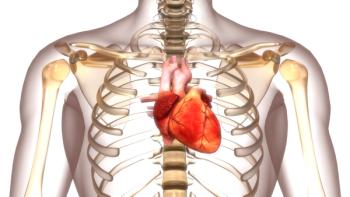
Forgotten and failing: The crisis in women’s health and how to fix it
Life expectancy has been unchanged for American women for a century — and may get worse due to lifestyle choices.
Women’s medical care has barely advanced in 100 years, yet our diet and lifestyle have taken a radical turn for the worse. This
A
When we factor in that around 16% of babies in the 1900s died before their first birthday compared with less than 1% today, we can make the claim that women in some U.S. states are actually worse off today than 100 years ago. If a baby lives to 1 year old and a woman lives to 100, the average life expectancy is calculated as 50 years. But remove the baby from the analysis and instead consider the average age a woman lived, and you get a much higher number. The deceased babies heavily influence these averages. So, for this report that found many Southern women are not living longer today than their great-grandmothers did 100 years ago, we must consider the infant mortality rate then versus now, which gives us a far worse prognosis. Women in America are dying earlier than their great-grandmothers despite all the talk of modern medical advances.
The other hard truth this study brings to light is that this outcome is entirely predictable. Medical researchers were prohibited from including women in clinical trials from 1977 to 1993, when Congress finally ruled they could be included in clinical trials again. That’s decades of research that didn’t consider how women’s bodies differ from men’s. And even today the disparity between female and male research subjects is unsettling.
We know health is regulated by our endocrine systems — our hormones — and no one challenges that female and male hormones are different, so why was it ever acceptable to assume that our bodies are identical from a medical standpoint?
Women’s hearts, lungs, brains and other organs to varying degrees are different from men’s. We present different symptoms, we get different diseases at different rates, and we often need different treatments. Yet, we’re diagnosed and treated as though we were identical.
Take Alzheimer’s disease, for example. Two-thirds of patients with Alzheimer’s are female, yet women only make up a fraction of the subjects in trials looking at the disease.
When it comes to chronic diseases, like Alzheimer’s, Type 2 diabetes, cardiac disease, cancer and mental health disorders, no sex is spared. This is because we both fall prey to the hormone insulin, which is our fat-regulating hormone, and reactive oxygen species (ROS), a signaling molecule that tells our cells when they’re full.
When insulin is high, the body goes into storage mode, stockpiling all the excess energy available and locking it up for future use. Insulin goes up when we eat carbohydrates. Our modern diet, laden with sugar and refined carbs, is the poison that pumps the insulin and drives fat accumulation and mitochondrial damage. Seed oils stimulate ROS, which means if insulin opens the door, ROS keeps it open for longer by depriving the brain of the knowledge the cell is full, which would in turn signal to our bodies to stop eating. These mechanisms are taught in detail in our two-day MetFix seminar, where personal trainers, doctors and individuals come together to learn how the body processes food as energy.
When the body is stuck in a fat-storing mode with no way of accessing the fat on our bodies, we feel tired, weight starts piling on, and soon we’re sick. When it comes to women’s health, we know that as estrogen levels drop, perimenopausal women become more vulnerable to insulin resistance. Few doctors and even fewer influencers understand the interplay between estrogen and insulin, but it is a critical relationship for every woman to be aware of. Many so-called experts see symptoms of insulin resistance and tell women, “You’re perimenopausal, there’s nothing to be done.” Some even suggest women at this stage of life should exercise less and eat more carbs — wildly dangerous advice from my research and understanding of the body’s essential mechanisms.
Many know a high-carb diet is deleterious, but not enough know why. When we launched
But the work doesn’t end there. Having spent more than a decade studying how women’s bodies are biologically and physiologically different from men’s, I knew we needed an online class helping women, our MetFix coaches and the members of our medical society learn the mechanisms of perimenopause and menopause so we can all navigate this tricky period of life plagued by a profound lack of research and host of influencers who have not studied the science.
Women do not need to be dying prematurely. Education will be key to reversing this disturbing reality. The female body is miraculous. We can regenerate our species, we have high pain thresholds, we cycle through hormones monthly and throughout our lifetime to live long lives — usually longer than men — so we can continue to care and contribute in our communities. Women deserve better when it comes to how we’re diagnosed and treated, but the best strategy will be to avoid the need for medical care for as long as possible, and that all starts with what you’re eating and how you’re training.
Newsletter
Stay informed and empowered with Medical Economics enewsletter, delivering expert insights, financial strategies, practice management tips and technology trends — tailored for today’s physicians.








